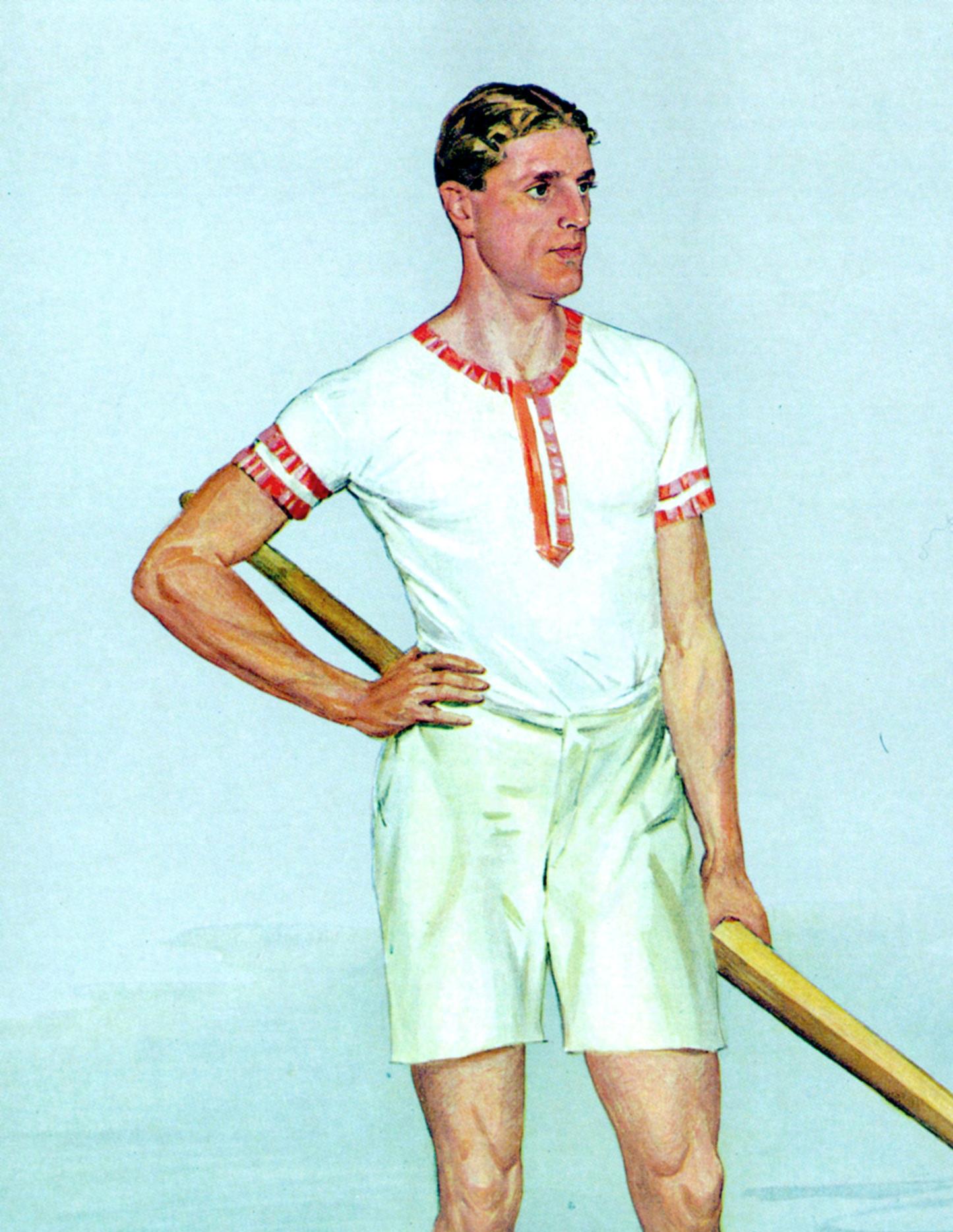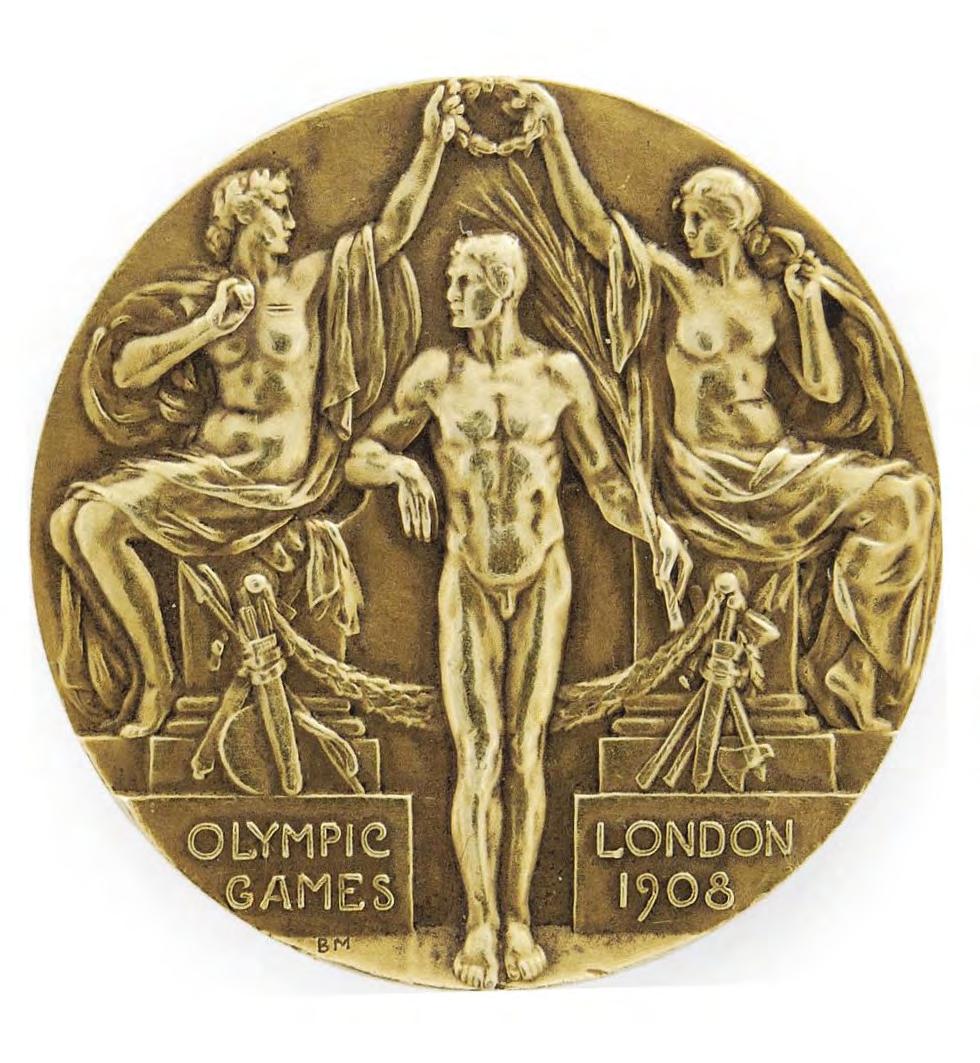
6 minute read
The surgeons of Vanity Fair magazine: Raymond Broadley Etherington-Smith
Raymond Broadley Etherington-Smith (1877-1913)
Oarsman. Surgeon. MRCS FRCS MA MB BCh
Advertisement
Raymond Broadley Etherington-Smith was featured in the Vanity Fair issue of the 5 August 1908, as Man of the Day No 1131. His caricature, simply captioned ‘Ethel’, was the work of Sir Leslie Ward, ‘Spy’. In his autobiography Forty Years of Spy, Ward wrote, ‘the finest and handsomest young athlete I ever drew as an undergraduate was R.B. EtheringtonSmith, known to his intimates as “Ethel”.’ Vanity Fair noted that ‘Ethel started on the race of this life in 1877.’ He was the second son of JH Etherington Smith, an important legal figure who was appointed Recorder of Derby and a Bencher of the Inner Temple. He was also a member of the crew that won the 1863 Grand Challenge Cup at the Henley Regatta. Following his father, Ethel was educated at Repton School, Derbyshire, entering in 1890 and leaving in 1893, apparently without distinguishing himself at work or at games. He entered Trinity College Cambridge in 1895, and his first two years were comparatively uneventful, but in his third and fourth years he established his reputation as a first-rate oarsman. When he began to row, the University Club was torn by dissension and it was mainly due to Ethel’s charming gifts of character and wise guidance that Cambridge was able to come into its own on the river. In 1899, when Ethel was aged 22, he was president of the University Boat Club when Cambridge won ‘The Boat Race’ after nine consecutive defeats by Oxford. Ethel excelled in rowing, winning important events with both single scull and double sculls, the University pairs, and fours, as well as the eights. He was a member of the Leander Club, that, in 1896, had re-located from Putney to Remenham, Berkshire. The clubhouse continues today as the epicentre of the annual Henley Royal Regatta. The Leander Club (logo pictured above) celebrated its bicentenary in 2018, and retains the same rowing attire as seen in Spy’s ‘Ethel’. The original darker club colour of cerise, at some stage, and for reasons unknown, was changed to pink. Its symbol is the hippopotamus, King of the River. Ethel was Captain of the Leander Club on four occasions. He captained its United Kingdom eight, which won the gold medal for the rowing eights in the London Summer Olympics


of 1908, defeating Belgium by two lengths. At 31 years of age Ethel had participated in one of the great races in Olympic rowing history. Over a century later, in September 2012, at Christie’s in London, the family auctioned his gold medal for £17,500. Plarr’s Lives of the Fellows of the Royal College of Surgeons (RCS) of England recorded: ‘He was a magnificent specimen of a man, tall, lean, with wavy fair hair, of the type loved by the Grecian sculptors. He had a host of friends who ardently admired him and affectionately called him ‘Ethel-Smith’. Not that there was anything feminine about him, for he was eminently virile both in his physique and in his attitude to life and men’. He entered St Bartholomew’s Hospital in 1900, as a university student with the highest reputation both on account of his athletic prowess and also his personal qualities: he subsequently made his way very rapidly at the hospital, holding the successive posts of surgical registrar, demonstrator of surgical morbid anatomy, assistant surgeon, and Warden of the College, the latter post first held by James Paget. He went through his ordinary career as a medical student without special distinction, graduating MA, MB, BCh Cantab., in 1903. He then spent over two years on the resident staff at St Bartholomew’s Hospital, with terms spent as an ophthalmic house surgeon, house surgeon, extern midwifery assistant and later, resident administrator of anaesthetics. In 1906 he was elected junior demonstrator of anatomy in the medical school and in June 1907 he was admitted a Fellow of RCS on the same day that he received his Membership (MRCS). He was appointed surgical registrar in 1910, and, in 1912, assistant surgeon at St Bartholomew’s Hospital. Vanity Fair noted that ‘not only as an athlete has he gained distinction; he is demonstrator of anatomy at St Bartholomew’s Hospital, and has held all the residential appointments, including that of House Surgeon … He is at his best as an oarsman and friend; as a motorcyclist he is a danger to himself and the public.’ Driving in his car, commonly with a friend, he was a familiar sight in the streets of London on his way to the chief athletic events of the year. Ethel was also an ardent motorcyclist who remained unmarried. There was no doubting EtheringtonSmith’s early surgical prowess, as shortly following his appointment as assistant surgeon, a colleague recalled that Ethel dealt with, among other emergencies, four perforated gastric ulcers between 7 pm Saturday night and 3 pm Sunday afternoon, along with two acute appendix cases, while he was simultaneously on duty at the West London Hospital. Tragically, he was taken acutely ill with pneumococcal peritonitis on Thursday, 17 April 1913, after operating on a patient with an abscess of the lung. A laparotomy was performed that afternoon, and though subsequently ‘everything was done that could be done’, he never rallied, dying at 8.15 am on the following Saturday. The St Bartholomew’s Hospital Journal of May 1913 contains the following Editorial Notes: ‘It is indeed difficult fully to realise, and it is impossible to find adequate words in which to express the enormous loss which the Hospital has sustained in the death of Mr Etherington-Smith. His illness, with all its tragic suddenness, seemed almost incredible in one so full of strenuous vigour, and his death following with such appalling swiftness came as a tremendous shock to all those who knew him. ‘He was only 36 years of age, with a brilliant career before him, and a record which can be described in one word –success.’ His obituary in the British Medical Journal of 26 April 1913, noted, inter alia: ‘Even-tempered, courteous in manner and quiet in address, he held decided opinions based upon assured

Obverse of Olympic gold medal, London 1908

knowledge, and expressed them clearly and pleasantly. In professional subjects his opinion was always sound, for it was based upon a broad platform of accumulated facts.’ The first part of his funeral service on 23 April 1913 was held in the Priory Church of St Bartholomew the Great, which was filled to overflowing. The coffin, surmounted by the Cambridge and Leander flags and a laurel wreath, was carried from the hospital to the church by members of the hospital staff closely associated with him.
After the service, the procession set out to Putney led by a large grey motor hearse. This was followed by the car that was so familiar an object to all at the hospital – empty. The committal service was carried out in the Putney Vale Cemetery among a wealth of flowers, the coffin being lowered into the grave by four Cambridge Blues who had shared with him many a hard-won race.
‘He was never self-conscious, yet always confident; an irresistible magnet, sublimely ignorant of his magnetism, an Apollo who knew not vanity. Because the gods loved him, he died young.’
Mr Peter F. Burke FRACS

